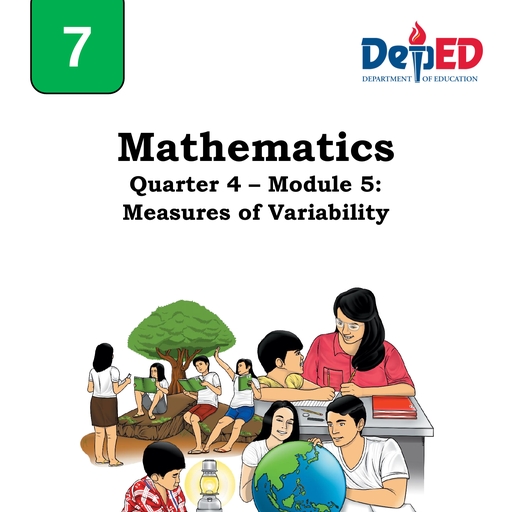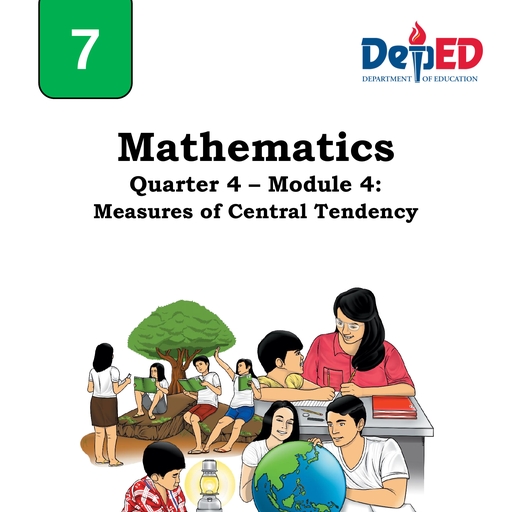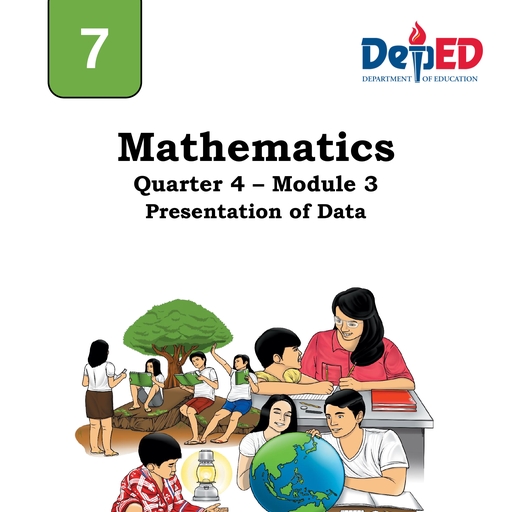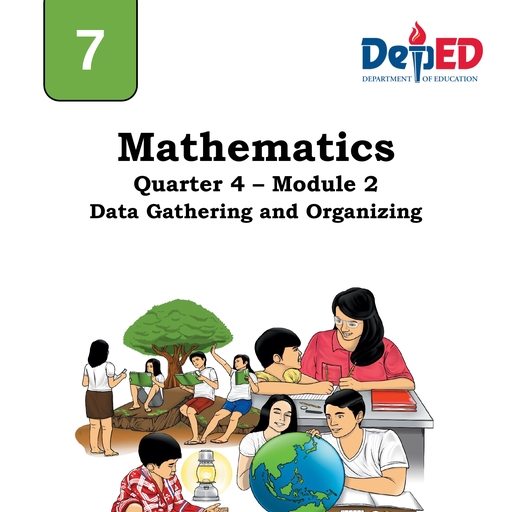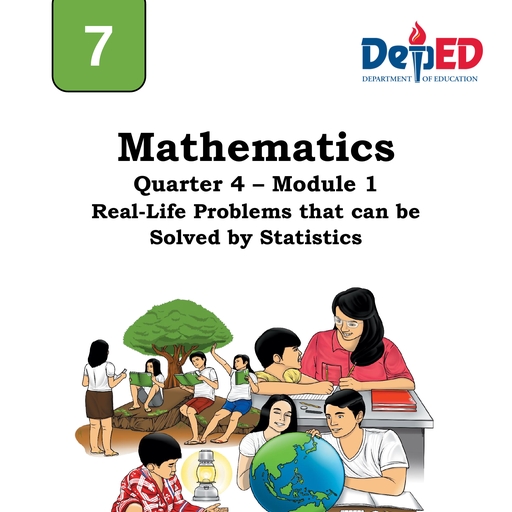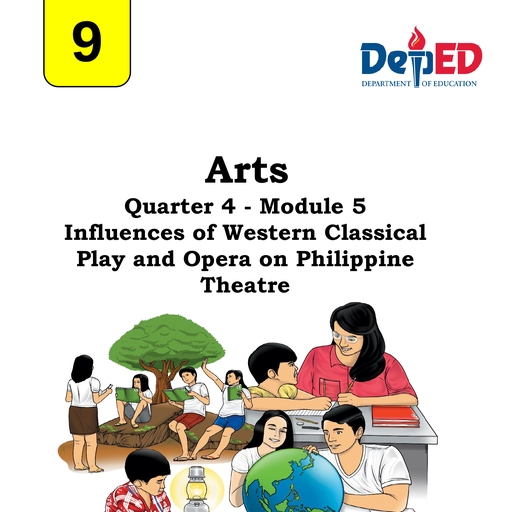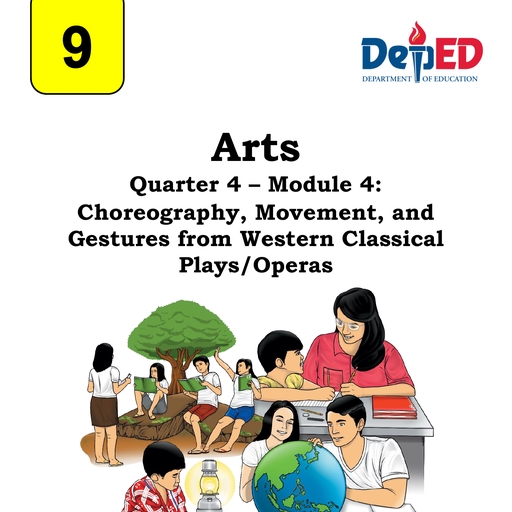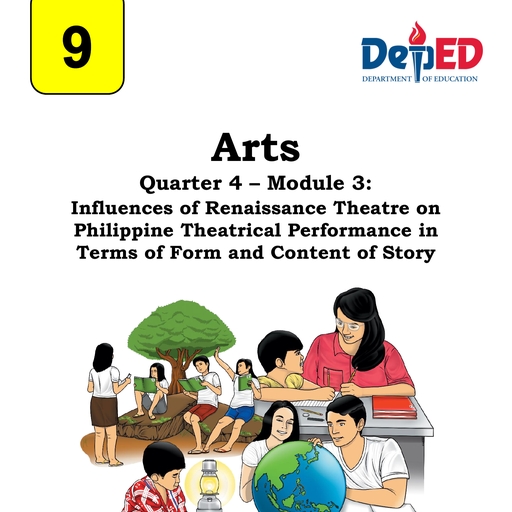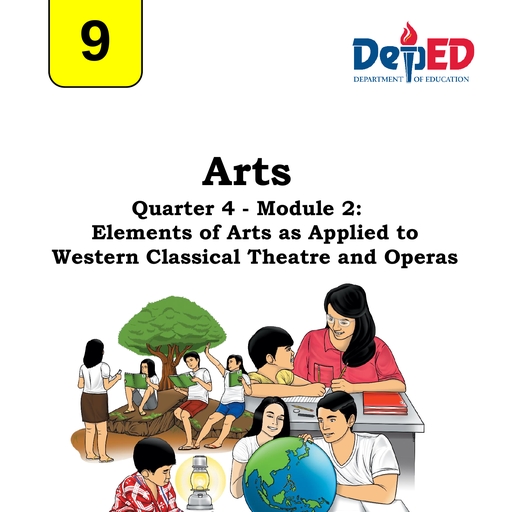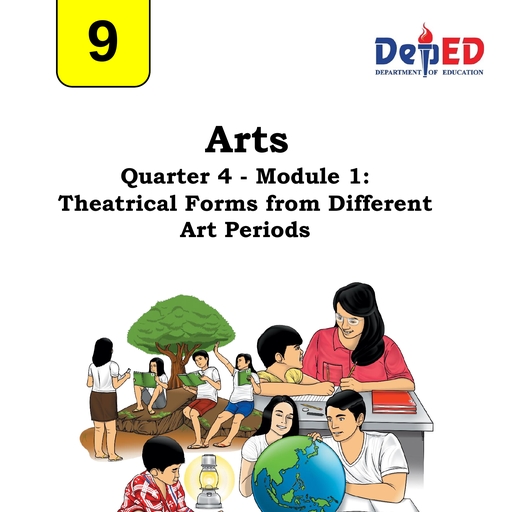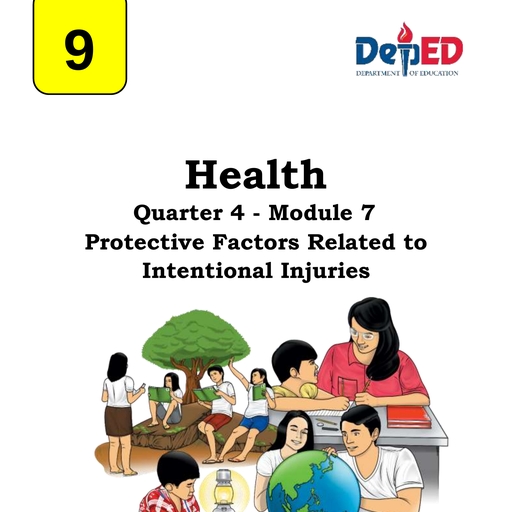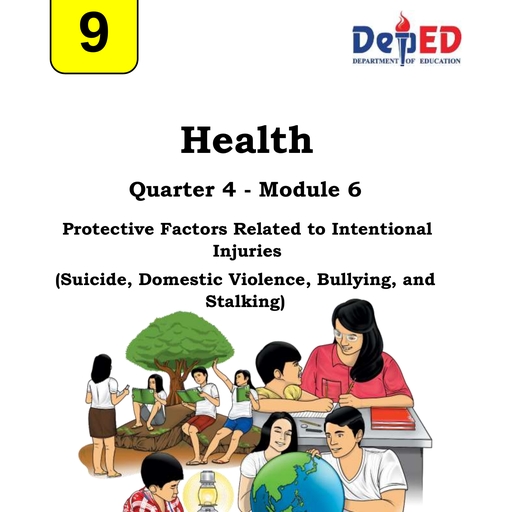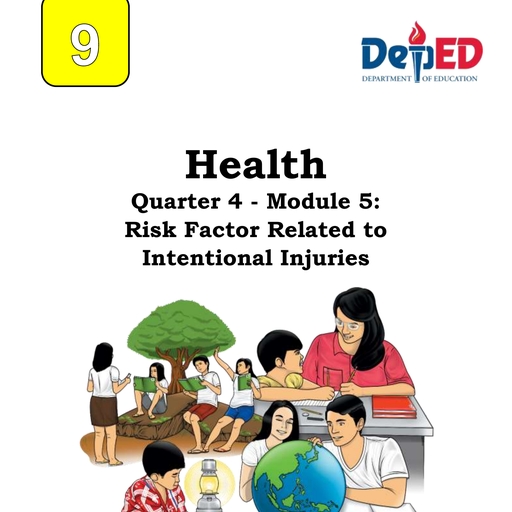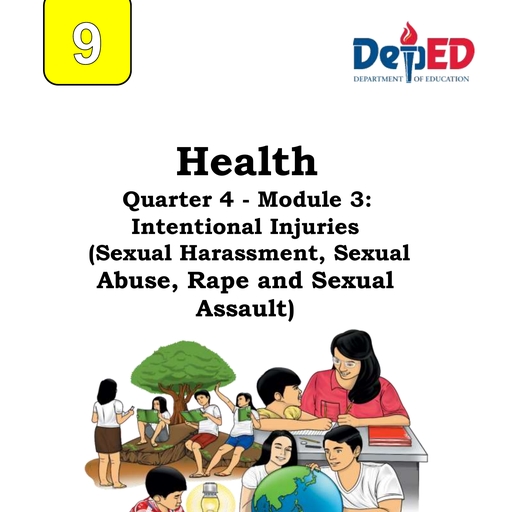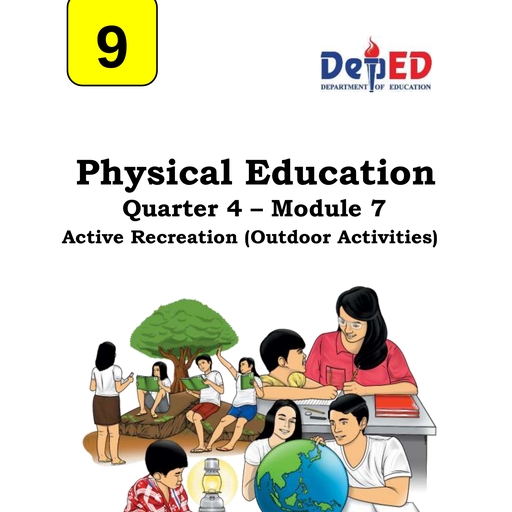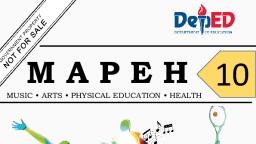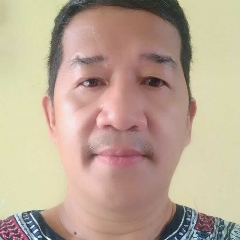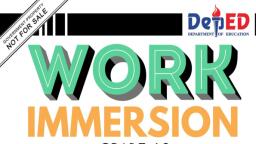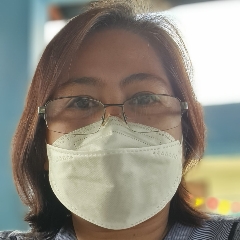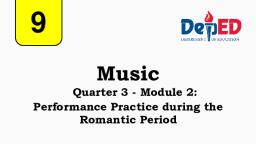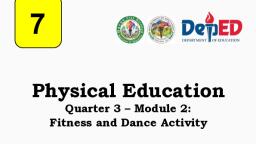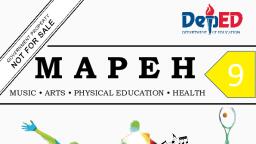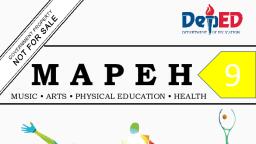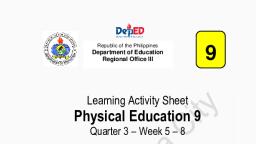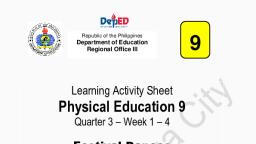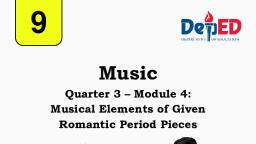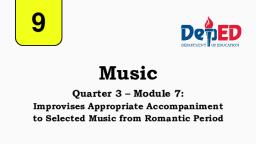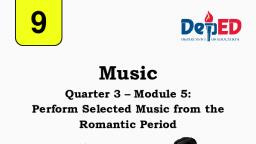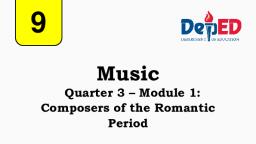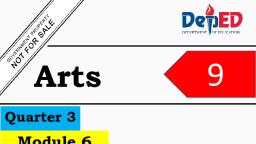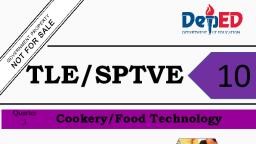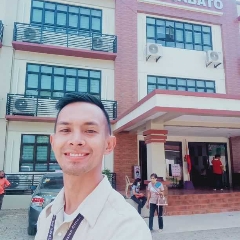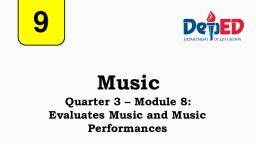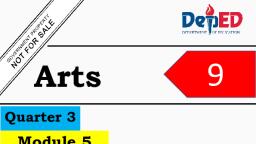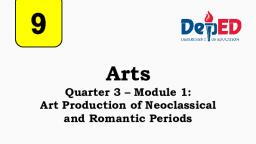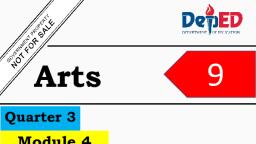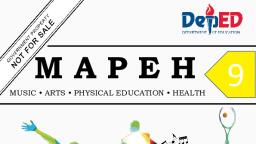Page 1 :
MAPEH, , MUSIC • ARTS • PHYSICAL EDUCATION • HEALTH, , 9
Page 2 :
Physical Education 9, Quarter 3 – Module 1: Skills related in Social Dancing, First Edition, 2020, Republic Act 8293, Section 176 states that no copyright shall subsist in, any work of the Government of the Philippines. However, prior approval of the, government agency or office wherein the work is created shall be necessary for, exploitation of such work for profit. Such agency or office may, among other things,, impose as a condition the payment of royalties., Borrowed materials (i.e., songs, stories, poems, pictures, photos, brand, names, trademarks, etc.) included in this module are owned by their respective, copyright holders. Every effort has been exerted to locate and seek permission to, use these materials from their respective copyright owners. The publisher and, authors do not represent nor claim ownership over them., Published by the Department of Education - Schools Division of Pasig City, Development Team of the Self-Learning Module, Writer: Iroal Joanne N. Person/Gayleen G. Binuya, Editor: Rosemarie Luartes (Content), Reviewers: Madelyn T. Urquiola, Illustrator:, Layout Artist:, Management Team:, , Ma. Evalou Concepcion A. Agustin, OIC-Schools Division Superintendent, Aurelio G. Alfonso EdD, OIC-Assistant Schools Division Superintendent, Victor M. Javeña EdD, Chief, School Governance and Operations Division and, OIC-Chief, Curriculum Implementation Division, , Education Program Supervisors, Librada L. Agon EdD (EPP/TLE/TVL/TVE), Liza A. Alvarez (Science/STEM/SSP), Bernard R. Balitao (AP/HUMSS), Joselito E. Calios (English/SPFL/GAS), Norlyn D. Conde EdD (MAPEH/SPA/SPS/HOPE/A&D/Sports), Wilma Q. Del Rosario (LRMS/ADM), Ma. Teresita E. Herrera EdD (Filipino/GAS/Piling Larang), Perlita M. Ignacio PhD (EsP), Dulce O. Santos PhD (Kindergarten/MTB-MLE), Teresita P. Tagulao EdD (Mathematics/ABM), , Printed in the Philippines by Department of Education – Schools Division of, Pasig City
Page 3 :
MAPEH, , MUSIC • ARTS • PHYSICAL EDUCATION • HEALTH, , 9, , Quarter 3, , Self-Learning Module 1, Skills related in Social Dance
Page 4 :
Introductory Message, For the Facilitator:, Welcome to the Physical Education 9 Self-Learning Module on Skills related, in Social Dance!, This Self-Learning Module was collaboratively designed, developed and, reviewed by educators from the Schools Division Office of Pasig City headed by its, Officer-in-Charge Schools Division Superintendent, Ma. Evalou Concepcion A., Agustin, in partnership with the City Government of Pasig through its mayor,, Honorable Victor Ma. Regis N. Sotto. The writers utilized the standards set by the K, to 12 Curriculum using the Most Essential Learning Competencies (MELC) in, developing this instructional resource., This learning material hopes to engage the learners in guided and, independent learning activities at their own pace and time. Further, this also aims, to help learners acquire the needed 21st century skills especially the 5 Cs, namely:, Communication, Collaboration, Creativity, Critical Thinking, and Character while, taking into consideration their needs and circumstances., In addition to the material in the main text, you will also see this box in the, body of the module:, , Notes to the Teacher, This contains helpful tips or strategies, that will help you in guiding the learners., , As a facilitator you are expected to orient the learners on how to use this, module. You also need to keep track of the learners' progress while allowing them, to manage their own learning. Moreover, you are expected to encourage and assist, the learners as they do the tasks included in the module., , For the Learner:, Welcome to the Physical Education 9 Self-Learning Module on Skills related, in Social Dance!, This module was designed to provide you with fun and meaningful, opportunities for guided and independent learning at your own pace and time. You, will be enabled to process the contents of the learning material while being an, active learner.
Page 5 :
This module has the following parts and corresponding icons:, , Expectations - This points to the set of knowledge and skills, that you will learn after completing the module., Pretest - This measures your prior knowledge about the lesson, at hand., Recap - This part of the module provides a review of concepts, and skills that you already know about a previous lesson., , Lesson - This section discusses the topic in the module., , Activities - This is a set of activities that you need to perform., , Wrap-Up - This section summarizes the concepts and, application of the lesson., Valuing - This part integrates a desirable moral value in the, lesson., Post-test - This measures how much you have learned from, the entire module.
Page 6 :
EXPECTATION, h-4)., , The module will guide you in executing the skills involved in the dance. (PE9RD-lIlbAt the end of the learning period, the students shall have:, 1. discussed the related skills of social dance;, 2. executed properly the basic movements in social dancing; and, 3. appreciated the value of social dance skills activity to fitness., , PRE–TEST, Complete the table by writing the correct skills in the columns. Answers are provided, in the box below., Locomotor Movements, , Step, Twist, Jump, , Rotation, Flexion, Extension, , Non-Locomotor Movements, , Walk, Contraction, Run Release, , RECAP, In your previous module, you have learned about Cha-Cha and its basic steps. Cha-Cha is a, Cuban dance that evolved from the Mambo in the mids 1950s. It is derived from the Spanish, ‘Cha Cha’ meaning ‘nursemaid’, or ‘charchar’ meaning ‘to chew cocoa leaves,’ or from ‘char’, meaning “tea”., Can you give the basic dance steps of Cha-Cha?
Page 7 :
LESSON, , Read to Understand, Social Dance is also known as Ballroom Dance because it encourages social interaction, between dance partners. It is a variety of dances performed by couples in which there is a, conventional pattern of steps. The term ‘ballroom dancing’ is derived from the word ball,, which in turn originates from the Latin word ballare which means ‘to dance’( a ballroom being, a large room specially designed for such dances)., The Specific Categories of Social Dance or Ballroom Dance, 1. Standard Dance are elegant and have strong emphasis on posture, more formal than, Latin Dances. They are generally dance in a closed position. It is consists of the following, dances:, a. Waltz, b. Quickstep, c. Foxtrot, d. Tango, e. Viennese waltz, 2. Latin Dances are prepared for hot, flashy movements, sexy poses and fire consuming, passion. It is generally faster-paced, more sensual and have more rhythmic expression., These are the following:, a. Cha-Cha-Cha, b. Mambo, c. Rumba, d. Samba, e. Jive, f. Paso Doble, 3. Club Dances or Freestyle Dance are the following Swing, Line Dance, Salsa, and, Merengue., The Basic Movement Skills
Page 8 :
1. Locomotor Movements – These movements allow you to move from one point in space to, another. It is canned from two words, “locos” which means place and “motor” which means, movements. It is consists of the following:, a. STEP- It is defined as transfer of weight from one foot to the other., b. WALK- Series of steps executed by both of your feet alternately in any direction., c. RUN- Series of walks executed quickly in any direction wherein only one foot stays on the, ground while the other is off the ground., d. JUMP- This movement is simply described by having both feet lose its contact with, ground and landing on both feet on the ground., 2. Non-Locomotor Movements- These are movements that are performed in one point in, space without transfering to another point. They don’t allow you to move from one place to, the other. These movements are the following:, a. FLEXION – It is the act of decreasing the angle of a joint. Another term for flexion is to, bend., b. EXTENSION – It is the act of increasing the angle of a joint. Stretching is another word for, extension., c. CONTRACTION – A muscle movement opposite to contraction done when it shortens,, narrows, and tightens using the amount of energy in the execution., d. RELEASE- A muscle movement opposite to contradiction done when it let goes or let, looses of being held into a shortening movement., e. COLLAPSE – To deliberately drop the exertion of energy into a body segment., f. RECOVER – This is to regain the energy exerted into a body segment., g. ROTATION – It is to move a body segment allowing it to complete a circle with its motion., h. TWIST – To move a body segment from an axis halfway front or back or quarter to the, right of left as in the twisting of the neck allowing the head to face right or left and the like., , ACTIVITIES, Activity A. Perform the Basic Movement Skills, Using the basic movements ( Locomotor and Non-Locomotor movements) create, three sets combination of the movements. Each set should consist of at least four, different movements in one formation or direction. Perform it with the 16-count in a, measure., Criteria:, Execution and Mastery of Movements, 35%, Artistic presentation and combination of movements 35%, Timing and Synchronization, 20%, Enthusiasm and Energy, 10%, TOTAL, 100%, , Activity B. Dancing and Fitness
Page 9 :
Determine your Target Heart Rate (THR). Follow the steps provided., 1. Find your PMHR in beats per minute by subtracting your age from 220:, * 220 - __________ = ( PREDICTED MAXIMUM HEART RATE ), 2. You need to aim for during the activity find your LTHR by multiplying your PMHR, by 60% (.6):, *__PMHR__ x .6 = (LOWEST TARGET HEART RATE) beats/minute, 3. You can aim for during the activity find your HTHR by multiplying your PMHR by, 80% (.8), *__PMHR__ x .8 = (HIGHEST TARGET HEART RATE) beats/minute, You are aiming for the range of the two figures which is your TARGET HEART RATE, RANGE., 4. After determining the THRR, do Activity A. then get your heart rate by placing your, middle finger in your carotid pulse located just below your jaw, beside your throat. In, 15 seconds, take your pulse, then multiply it by 4. ( Pulse x 4 ), 5. You have reached your minimum THR. If not yet, repeat Activity A and repeat Step, 4, , WRAP–UP, Social Dancing will enhance your fitness practices and will influence community, healthy practices. To sum up our learnings, complete the following open ended statements:, 1. I learned that ___________________________________________________., 2. Social Dance is beneficial to one’s health because, ., 3. To improve my dancing skills, I _______________________________________., , VALUING, REFLECTION:, 1. Do you find dancing an effective way of expressing yourself? Why?
Page 10 :
PRE-TEST, NON-LOCOMOTOR MOVEMENTS, Flexion, Contraction, Rotation, Twist, Extension, Release, , LOCOMOTOR MOVEMENTS, Step, Walk, Run, Jump, , POST-TEST (POSSIBLE ANSWER), Social Dance allows people to be more active, sociable and develop creative and physical, skills. It will also increase one’s physical confidence, improved mental functioning, improved, psychological wellbeing and greater self-confidence., , KEY TO CORRECTION, Essence, Relevance, Clarity, Total, , 5pts, 3pts, 2pts, 10 pts, , Rubric:, individual’s personality?, 1. In your own understanding, what are the significant contributions of social dances to the, Essay Writing: (10 pts), , POST, , TEST
